The lockdown brought our work on community-based waste management under Su-Dhara, to an abrupt halt. A week before the lockdown, despite numerous challenges at the community level, we successfully installed an innovative composting unit on March 17 at the Durga Mandir in Balbir Nagar Extension. We had been working on addressing waste at the community-level by mapping different waste streams and modeling the value chains that could divert such streams away from landfills and turned into useful assets.
During our months of work in the three wards of Shahadra – 50E, 51E and 38E—we had seen mounds of marigold flowers and leaves in the dhalaons (waste dump yards). This was not only a totally wasted asset but also a low-hanging fruit waste-to-wealth opportunity in a community that features several temples.



From a behavior change perspective, this is a waste stream with which people connect emotionally—no one wants to see their offering to a deity end up in a waste pile—and this makes it easier for them to commit to solving th To convert it into something of value to the community and making visible the process of doing so, seemed like the perfect place to begin to amplify the dialog on waste segregation at the institutional and house level.
The first most obvious use for the flowers was to convert them into products like paper, agarbattis, candles, etc—work that is being done across India. However after consulting multiple NGOs who work on such products, we were told that the transportation and logistic costs of moving the flowers from these small temples to the processing facilities were too high to justify the costs. So the best option for us was to turn these flowers into high quality compost.
The first challenge was to select the appropriate technology that would create tangible benefits for the community without a massive effort. After an exhaustive search of technologies that would ease the process of composting in the community we selected this 300 KG capacity, rotating-drum model a. Our key selection criteria for the composting unit were:
1) Should be very easy to use
2) Should not create odor
3) Should be space efficient
4) Should not create a leachate/insects problem
5) Should be durable
6) Should turn waste into compost quickly
7) Should have enough capacity to allow for at least 1 month of waste at a given location in one of the two drums, to provide ongoing rotation of waste and therefore zero organic waste would have to be thrown away.
Through consultations in the community, we found two very sincere people, Shri Satish Nagpal and Shri Rajesh Tyagi, of Durga Mandir Committee in Jyoti Colony, Shahdara.
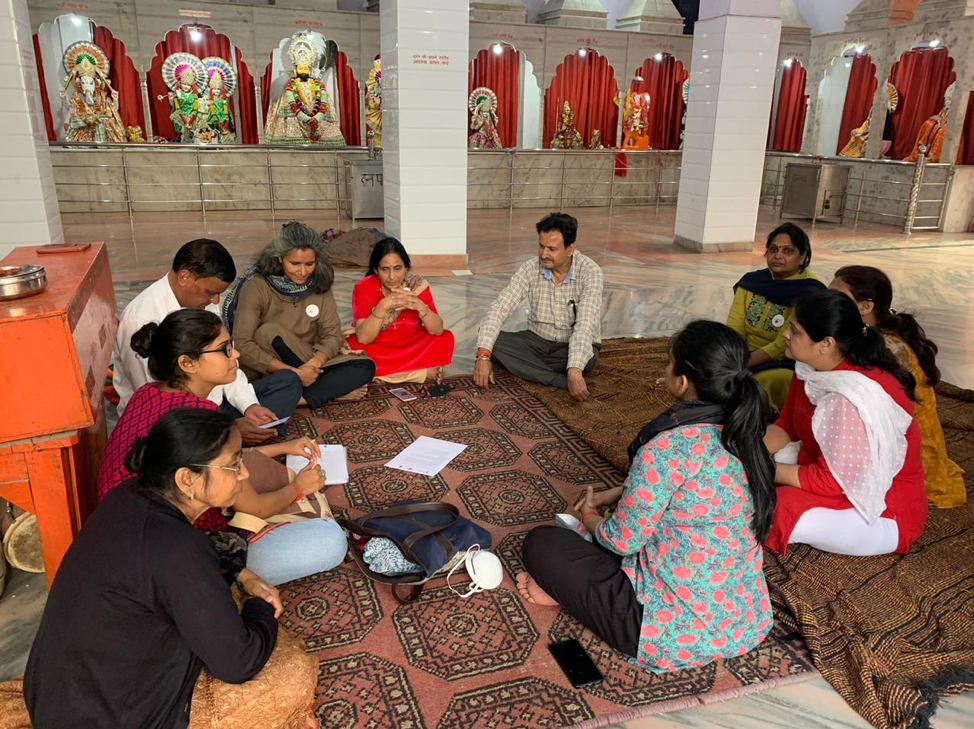
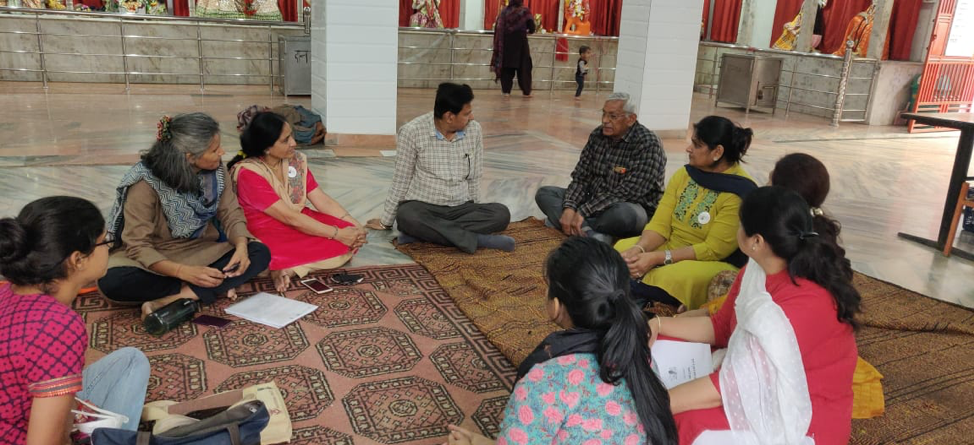
They had long been unhappy with their temple waste being dumped as waste and were excited at the idea of turning it into compost. Our research in the community had shown that no matter how small the house, most people kept a few potted plants and many paid Rs 10 once a month to a maali who would add nutrients to their plants. We told the temple management that not only could they use the compost for their own plants at the temple, but also distribute it back to the community as a free gift. They readily agreed and were thrilled that the temple flowers would no longer get mixed with other household waste and end up in a landfill.
We installed the Su-Dhara composting unit at the temple on March 2nd with the support of several community members, especially women, who’d been part of our awareness and outreach on composting in the community for several months.
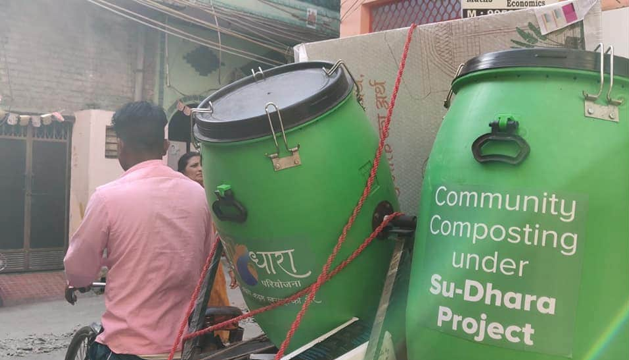
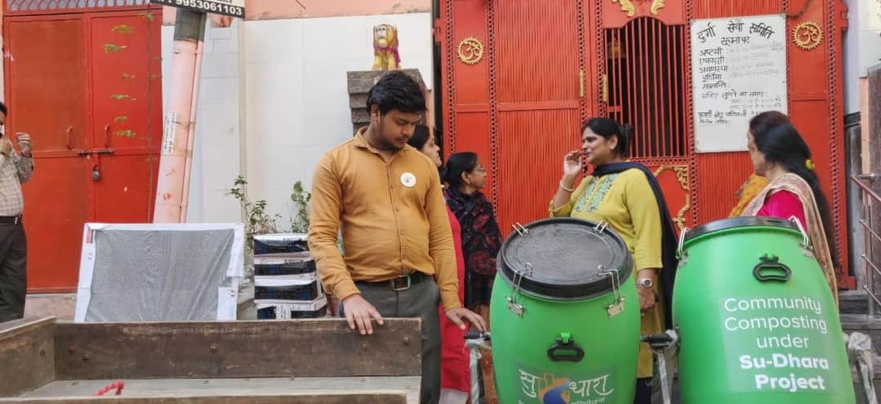
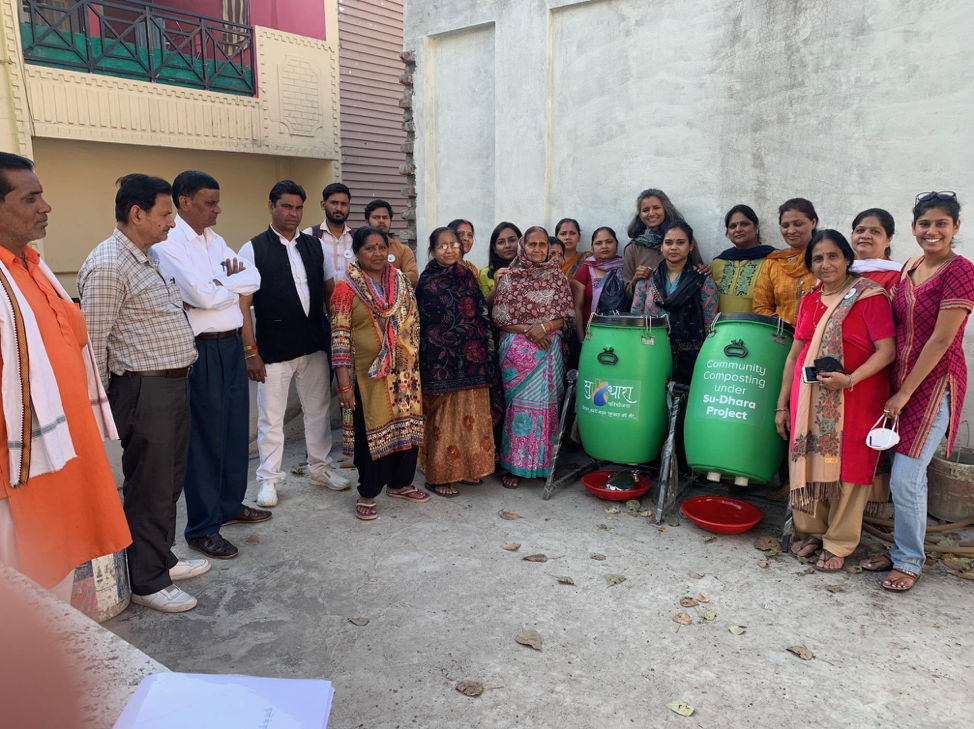
We installed the unit on the rooftop of the temple and provided quick training- a very simple process of dumping all waste into a drum, adding some cocopeat and microbe mixture provided along with the unit and rotate the drum a couple of times. The mandir team immediately got to work. They segregated the organic waste and began dumping it into the unit.

We installed this unit on March 17th, days before the lockdown. Since we were abruptly cut off from our regular visits to the field, we assumed that the composting work would also have been put on hold. In July, to our great joy, we received a video from Mr. Tyagi of a big fresh batch of khaad (compost) that had been harvested from the temple waste. While the number of visitors had almost stopped at the temple, there still were some flowers trickling in, that the temple management team continue to put into the compost bin.

This conversation between Prabha Agrawal and Mr. Tyagi the local community champions of this project provides an insight into how this unit proves the success of its design, its ease of use and the pride they feel for having started this composting process.
Under Su-dhara, over the past year, we have engaged with many community champions who have eagerly lent their support for scaling up waste-to-wealth initiatives. We have recently launched the Kachre-se-Sampada campaign for supporting community members to turn their kitchen waste into composting. Addressing segregation and composting at the household level, in addition to provide larger-scale scientific solutions such as automated segregation machines that can replace the large piles of waste at the Dhalaons and transfer the waste into separate waste streams that can be used effectively, is part of a coordinated effort under Su-Dhara to demonstrate solutions that can be scaled up across the country.
The success of this unit at the temple has provided the one thing that we had most aimed for—a living proof that it is indeed possible to quickly, efficiently convert organic waste onsite into valuable resource within a month! The solidarity among the community members and their enthusiasm to scale up this intervention in the entire area is also proof of a small shift in behavior that we were able to enable by demonstrating a waste-to-wealth process in action.
The seeds for home and community composting have been successfully sown under Su-Dhara… It’s time to scale this work up!